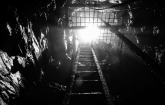Independent Study Details Misleading and Biased Practices of Rare Earth Mining Projects
AMERICAN FORK, Utah, July 28, 2019 /PRNewswire/ -- On July 22, President Trump sent five Presidential Determinations to the Secretary of Defense stating that domestic production capabilities for the following are essential for the national defense:
- Separation and processing of heavy rare earth elements;
- Separation and processing of light rare earth elements;
- Rare earth metals and alloys;
- Samarium cobalt rare earth permanent magnets; and
- Neodymium iron boron rare earth sintered material and permanent magnets
Rare earth mining projects are increasingly being promoted as a way to achieve such domestic production capabilities. However, IBC Advanced Technologies, Inc. ("IBC") provides the following cautionary information, based on an independent study and independent expert findings, in order to inform policy makers as they carry out the Presidential Determinations.
A valuable framework for assessing the Presidential Determinations is provided by an independent study, entitled, "A Review of Misleading Methods and Biased Practices in Evaluating the Feasibility of Rare Earth Mining Projects," co-authored by G. Barakos and H. Mischo, Technische Universität Bergakademie, Freiberg, Germany (the "Independent Study"):
The Independent Study's authors noted that "[the evaluation of a mining deposit] is depicted in feasibility studies and technical reports which are required in the preproduction stages to justify continued investment." The authors' scope was to "expose…fallacious methods and specify how such reports should be conducted."
Among others, the 2013 Preliminary Economic Assessment ("PEA") prepared for Ucore Rare Metals Inc.'s ("Ucore") Bokan Mountain rare earth element ("REE") deposit in Alaska ("Bokan Mine") was included in the study.
The authors stated:
"A thorough review on many reports, presentations and press releases from mining companies and their consulting associates denotes the utilisation of an array of different misleading metrics and ambiguous methodologies. These controversial reporting practices have infused the REE mining industry and are widely adopted despite being in discordance with regulated reporting standards."
In one of its many findings, the Independent Study reported on the jump in REE prices which occurred after the "…crisis and spike of 2011 when fears of Chinese monopolistic control of production, export restrictions and global supply shortages drove prices up nearly tenfold. The crisis was sufficient to cause a global treasure hunt by way of exploration of REE deposits; the high prices of REE made investments in start-up projects seem temptingly easy. Yet the crisis did not last long; the prices plummeted in a relatively short time…" However, "…in many projects conducted from 2011 to 2013 [specifically referencing the Bokan Mine project], the REE price predictions are based on a three-year average evaluation that incorporates the price bubble of mid-2011." The authors noted that "…projects including the period of the 2011 price spike in their forecast models will be getting erroneous results."
In discussing their conclusions, the authors stated:
"Given these deceptive and in many cases fallacious reporting practices, it becomes obvious that any assessment of the deposits and of the feasibility of the potential REE projects is difficult to make."
The Independent Study supports findings found in the sworn declaration of expert Dr. David R. Hammond (Hammond International Group), an independent mineral economics consultant ("Independent Expert Findings"). Dr. Hammond conducted an update of the economic value indicators represented by Ucore in its March 13, 2013 PEA. Among other things, the Independent Expert Findings make clear that the Bokan Mine will not be commercially feasible for approximately 30-40 years, if ever. In fact, the updated analysis of Ucore's 2013 PEA indicates the Bokan Mine project's current Net Present Value is negative $819 million at an after-tax nominal discount rate of 12%.
In his sworn declaration, Dr. Hammond also stated that as a result of previous uranium mining operations between 1957 and 1971, contaminated soils, mine workings and waste rock remain at the Bokan Mine location, which is now designated as a Superfund Site by the United States Environmental Protection Agency. Although not currently on the National Priority List, cleanup and other remediation costs are unknown and offer potentially enormous financial liability to any owner or Potentially Responsible Party.
Further details concerning Dr. Hammond's findings, as well as a link to his sworn declaration, can be found in IBC's press release dated July 4, 2019:
Ucore has failed to contest any of the Independent Expert Findings:
Despite Dr. Hammond's uncontested findings, Ucore's July 25, 2019 press release includes the following statements regarding the amount of its Bokan Mine resources, and its capabilities to separate and process REEs:
- Ucore's COO: "The Bokan-Dotson Ridge Earth Project property is an estimated 82% Indicated and 18% Inferred Mineral Resource…."
However, by Ucore's own admission, the Bokan Mine resources are so speculative that they cannot be categorized as mineral reserves and thus do not have demonstrated economic viability. Ucore's Management's Discussion and Analysis for the year ended December 31, 2018 affirms:
"The PEA includes indicated and inferred mineral resources only, which are considered too speculative geologically to have the economic considerations applied to them that would enable them to be categorized as mineral reserves. There is no certainty that the PEA will be realized. Mineral resources that are not mineral reserves do not have demonstrated economic viability. Most mineral exploration projects do not result in the discovery or development of commercially or profitably mineable ore deposits. No assurance can be given that any particular level of recovery of ore reserves or resources will be realized or produced from the Company's Bokan Project." - Ucore's Chairman: "[Ucore] is well positioned to satisfy the needs of U.S. defense and commercial markets by installing REE separation and processing capabilities in Alaska, secured by our prime critical minerals project at Bokan-Dotson Ridge."
However, over and above Ucore's admission as to the speculative nature of the Bokan Mine resources, the statement of Ucore's Chairman provides no assurance that Ucore has the technical and financial means to install "REE separation and processing capabilities in Alaska." Ucore operates no separations or processing facilities, has abandoned the separations technology upon which its PEA was based and has no license from IBC for the separation and processing of REE's. Furthermore, Ucore has never earned a profit. In its financial statements for the period ending March 31, 2019, Ucore reported a retained deficit of CAD $48,305,314, cash of CAD $287,089, restricted cash of CAD $57,979 and stated:
"The Company has no sources of revenue, experienced significant losses and negative cash flows from operations in previous years and has a deficit….The Company's current liquidity and capital resources raise significant doubt about the Company's ability to continue as a going concern for the next twelve months without any inflow or new funds during the first half of 2019."
Steven R. Izatt, President and CEO of IBC, commented, "In building the rare earth supply chain, we urge Federal and State Governments to carefully assess the technical, economic and environmental merits of projects and thoroughly analyze the claims and capabilities of rare earth mining companies. It is important to see beyond the current panic and avoid the temptation to fund projects that purport to be viable but, in fact, are not, based on accurate and current evaluations."
Background of IBC
IBC is an award-winning provider of proprietary and innovative Molecular Recognition Technology ("MRT") products and processes, based on green chemistry and green engineering, to premier customers worldwide. IBC's SuperLig®, AnaLig® and MacroLig® products and associated processes are used in manufacturing, analytical and laboratory applications.
In 1988, IBC was founded by and named after three Brigham Young University professors: Dr. Reed M. Izatt, Dr. Jerald S. Bradshaw and Dr. James J. Christensen.
IBC is the proud sponsor of the International Izatt-Christensen Award. This Award, founded in 1991 and named after Dr. Reed M. Izatt and Dr. James J. Christensen, two of the founders of IBC, recognizes excellence in macrocyclic and supramolecular chemistry. It is known as one of the most prestigious small awards in chemistry. The Award is presented annually at the International Symposium on Macrocyclic and Supramolecular Chemistry ("ISMSC"). Two of the early recipients of the Award later shared the 2016 Nobel Prize in Chemistry. The precursor of the ISMSC was founded by Dr. Izatt and Dr. Christensen in 1977.
A privately-held Utah corporation, IBC counts among its shareholders a multi-billion dollar international manufacturing company, which has been a major customer and benefactor of IBC for over thirty (30) years. IBC has built its business upon integrity, trust and excellence and values its close association with such top-tier companies.
IBC provides proprietary, green chemistry and green engineering SuperLig® Molecular Recognition Technology products and processes worldwide. More information can be found at www.ibcmrt.com
SOURCE IBC Advanced Technologies, Inc.

Related Links
WANT YOUR COMPANY'S NEWS FEATURED ON PRNEWSWIRE.COM?
Newsrooms &
Influencers
Digital Media
Outlets
Journalists
Opted In



Share this article